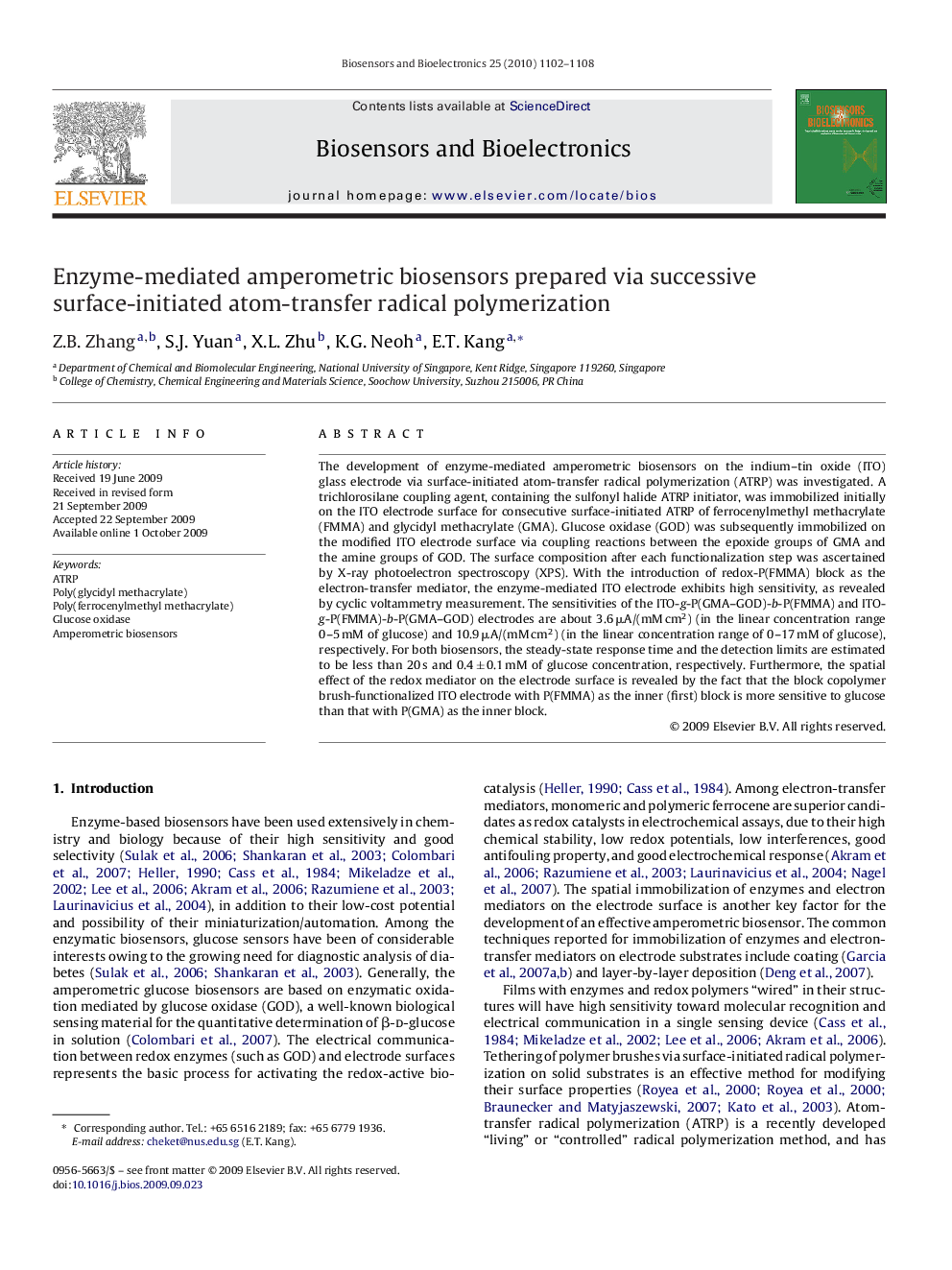| Article ID | Journal | Published Year | Pages | File Type |
|---|---|---|---|---|
| 868803 | Biosensors and Bioelectronics | 2010 | 7 Pages |
The development of enzyme-mediated amperometric biosensors on the indium–tin oxide (ITO) glass electrode via surface-initiated atom-transfer radical polymerization (ATRP) was investigated. A trichlorosilane coupling agent, containing the sulfonyl halide ATRP initiator, was immobilized initially on the ITO electrode surface for consecutive surface-initiated ATRP of ferrocenylmethyl methacrylate (FMMA) and glycidyl methacrylate (GMA). Glucose oxidase (GOD) was subsequently immobilized on the modified ITO electrode surface via coupling reactions between the epoxide groups of GMA and the amine groups of GOD. The surface composition after each functionalization step was ascertained by X-ray photoelectron spectroscopy (XPS). With the introduction of redox-P(FMMA) block as the electron-transfer mediator, the enzyme-mediated ITO electrode exhibits high sensitivity, as revealed by cyclic voltammetry measurement. The sensitivities of the ITO-g-P(GMA–GOD)-b-P(FMMA) and ITO-g-P(FMMA)-b-P(GMA–GOD) electrodes are about 3.6 μA/(mM cm2) (in the linear concentration range 0–5 mM of glucose) and 10.9 μA/(mM cm2) (in the linear concentration range of 0–17 mM of glucose), respectively. For both biosensors, the steady-state response time and the detection limits are estimated to be less than 20 s and 0.4 ± 0.1 mM of glucose concentration, respectively. Furthermore, the spatial effect of the redox mediator on the electrode surface is revealed by the fact that the block copolymer brush-functionalized ITO electrode with P(FMMA) as the inner (first) block is more sensitive to glucose than that with P(GMA) as the inner block.
